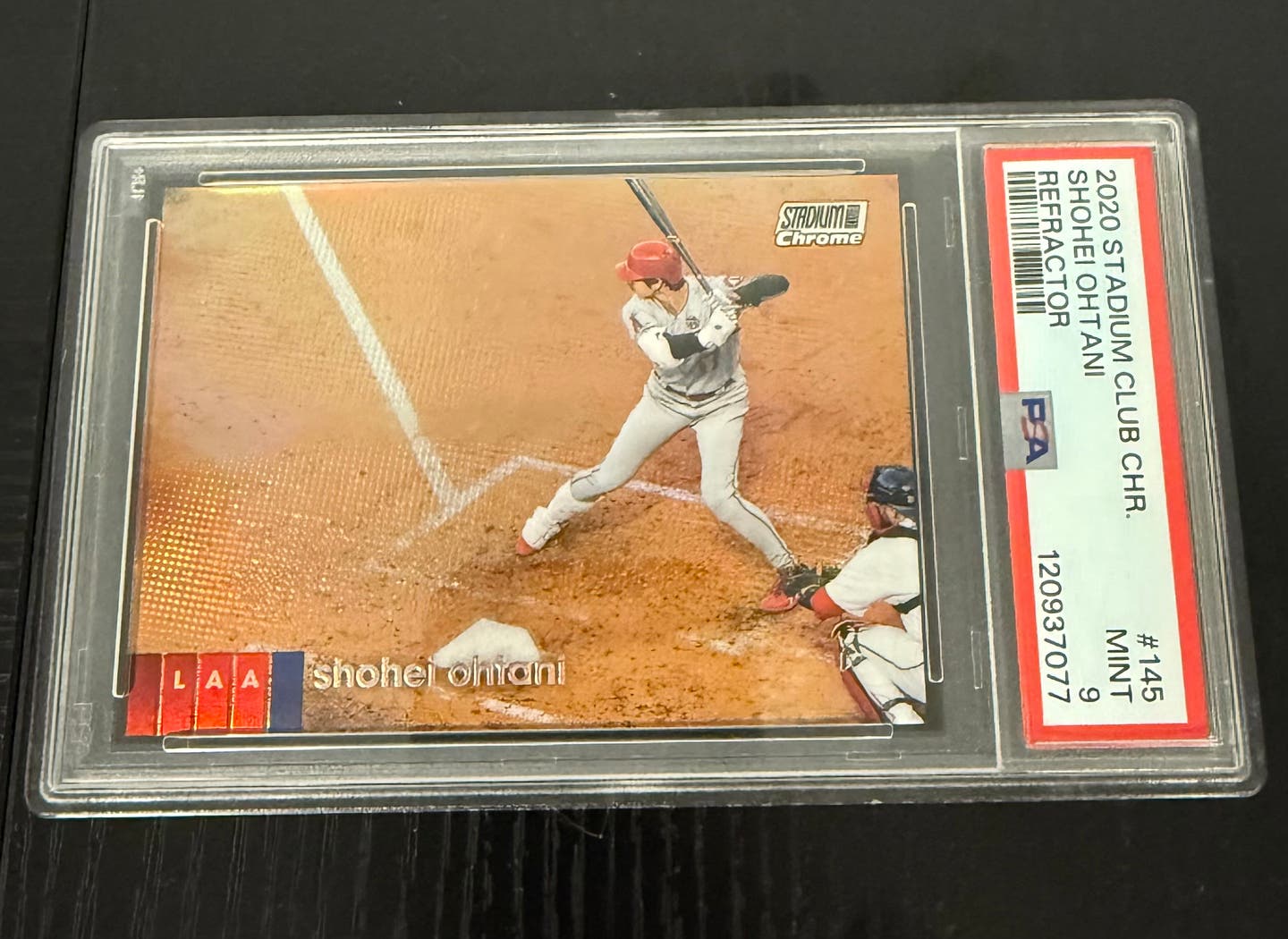What's It Worth?
Vintage Bowman set worth a second look
By T.S. O’Connell
It’s probably unfair to call the 1951 Bowman Baseball issue the “Rodney Dangerfield of baseball card sets.” In the first place, anteing up $25,000 or so for a Near-Mint set is hardly chump change, but when we speak of “getting no respect” in this instance, it’s all relative.
The relative in question here is Topps, which competed with Bowman in a kind of half-hearted fashion in 1951, apparently offering little indication of the kind of splash it was going to make only one year later.
Despite hosting the two “real” rookie cards of two of the greatest stars of the postwar era, the 1951 Bowman set receives only a fraction of the attention and enthusiasm accorded its Topps counterpart from 1952. More on that later.
For 1951, at least, the Philadelphia-based Bowman had the playing field all to itself, save for the quirky Topps Red and Blue Back issues that inspired even less passion in 1951 than they would more than a half-century later.
Though it couldn’t have been imagined at the time, the hand-painted issue represented something of a passing of the torch in terms of dominance in the baseball card world. While the spectacular paintings in the 1951 Bowman issue were done from team-supplied black-and-white photography, it was nonetheless a genre that was on its way out. After issuing cards in 1952 in essentially the same fashion, Bowman would switch to color photography in 1953, while Topps would revolutionize the whole marketplace with colorful, giant-sized flexichrome illustrations in 1952.
While also colorized black-and-white photographs, the flexichromes retained more of the photographic feel than did Bowman’s efforts from 1950-52. These looked like paintings, and damn good ones at that.
Despite the nominal competition from the two Topps mainstream issues or the even more exotic Connie Mack and Major League All-Stars or the Team Cards, Bowman didn’t exactly phone it in that year. Designers tinkered with the size of the cards, enlarging them to 21/16-by-31/8 inches and – just as significantly – expanded the number of cards in the set from 252 to 324. That made it the largest candy or gum issue ever up to that point and was dwarfed only by “The Monster,” the 1909-11 T206 White Border tobacco issue from an earlier generation.
As dramatic as that jump is, it was 16 cards short of what Bowman promised in advertising literature and on boxes that urged the youth of America to “Collect all 340 cards.” Coming as it did still several years before the arrival of the ultimately ubiquitous checklist cards, those very same youngsters had no way of knowing that the set was actually complete at 324.
While hobby mythology might suggest that Bowman’s art director, George Moll, arguably the best-known name in hobby circles connected with Topps’ archrival in the early 1950s, might have engineered the missing numbers on purpose, the accumulated data from nearly six decades suggests otherwise.
The key to consider in assessing the evidence is the roster of the missing players: Stan Musial, Ralph Kiner, Jackie Robinson and Joe DiMaggio, to name the most prominent MIAs. The Yankee Clipper never had a Topps or a Bowman card; the widespread presumption is that he wanted a good deal more money than either were willing to pony up.
For Kiner and Robinson, it seems more likely that these were a couple of the opening salvos in the five-year Topps/Bowman contractual wrangle that left alternating issues from the two companies looking like the missing front teeth of the very same prepubescent youngsters they were trying to sell the cards to.
Musial, like Joe D, would seem to be in a class by himself here. Both could boast having cards in the cheesy 1951 Berk-Ross set, a mavericky issue that may have been able to include those two giants because they didn’t approach them for permission to be included in the issue. I couch that as speculative; the cards themselves are so dramatically inferior to the Topps and Bowman offerings of the period that its easy to imagine such a scenario.
Generally speaking, the 1951 Bowman issue is hardly defined by who isn’t there. Rather, it’s best known for who is: rookies Mickey Mantle and Willie Mays. It’s a good marker of the previously mentioned respect dilemma that the Mantle rookie sells for a fraction of its infinitely more famous Topps counterpart from a year later, but it also has to suffer the indignity of having the Topps card referred to as Mantle’s rookie. It isn’t.
But the late-season inclusion of the Big Apple’s young star as the first card in the 72 cards added above No. 253 was marketing genius that would be precisely imitated the following year with Topps’ printing of its own high series and the fabled No. 311 Mantle card.
“The Mantle rookie in 1951 Bowman is so underpriced it’s not funny,” said vintage card dealer Bill Nathanson of Polo Grounds in Plantation, Fla. “And it's much harder to find.”
That’s a sentiment echoed by another famous card dealer, Alan “Mr. Mint” Rosen. “The Mantle and Mays rookies have helped to make this a very collectible and popular set, especially on the East Coast,” said the man who’s traveled much of the East Coast and beyond in pursuit of pricey pasteboards.
And while Mantle and Mays capture the rookie headlines, there were other first-year stalwarts in 1951 Bowman as well. Like Mickey’s pal, Whitey Ford. “The Ford card can be a bear because it’s his rookie card and also because its the first card in the set,” Rosen continued. “It is also a good illustration of the dramatic difference between grades, with an enormous swing between the Mint prices and those of off-condition specimens.”
The rest of the rookie-card lineup is impressive, but not a deal breaker for somebody trying to piece together a set. Hall of Famers Monte Irvin and Nellie Fox made their debut here, as did Joe Garagiola, Jackie Jensen, Joe Adcock, Jimmy Piersall and Carl Erskine.
Still, it’s the veterans who can boast some of the best cards, from great action poses from Ted Williams, Warren Spahn and Roy Campanella to incredible portraits of Bob Feller, Robin Roberts and Yogi Berra.
The issue also broke some new ground by including all 16 major league managers for the first time, plus two coaches, both Yankees: Hall of Fame catcher Bill Dickey and Tommy Henrich in the same image as his card the year before (there was much recycling done by Bowman in that fashion), but this time designated as a coach.
By issuing cards in Series, Bowman was able to update, as it were, to account for early-season trades, so a full dozen cards in the set depict players in a uniform different from what is listed on the back of the card.
The most curious shenanigan in the issue was card No. 195, White Sox manager Paul Richards. Rather than being a colorized photograph, it’s an artist’s caricature of the angular-featured Richards, a kind of unexpected stutter that accents the eloquence of the rest of the issue.
It could be that the Bowman gang was merely trying to give everyone a chuckle, or they might have simply been confronted with no workable photo for the Chicago skipper.
It’s more agreeable to attribute it to the former motivation, in part because it probably worked quite well in raising a chuckle 58 years ago.
Still does today, too.








